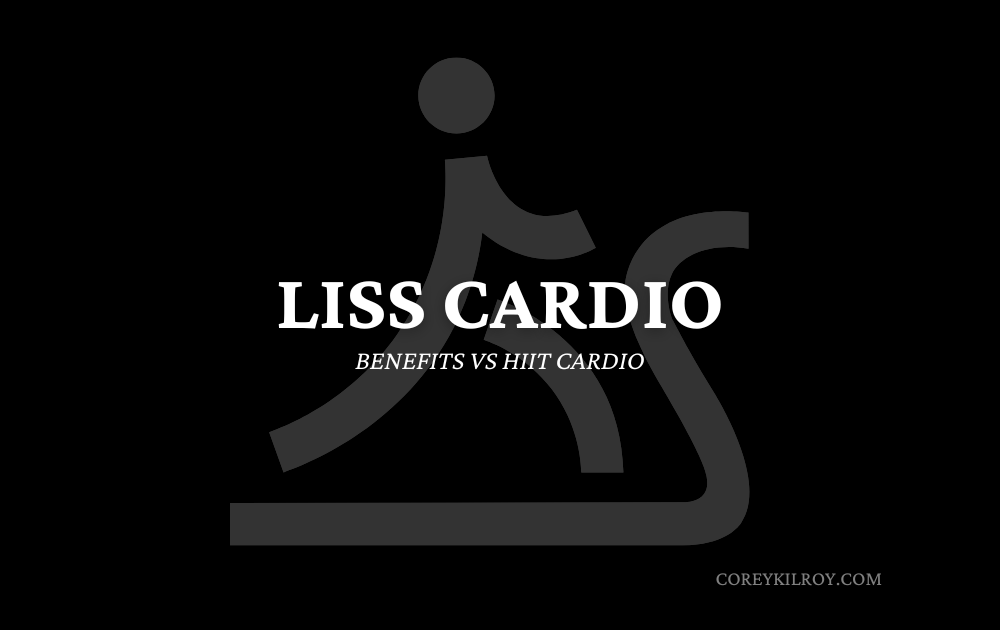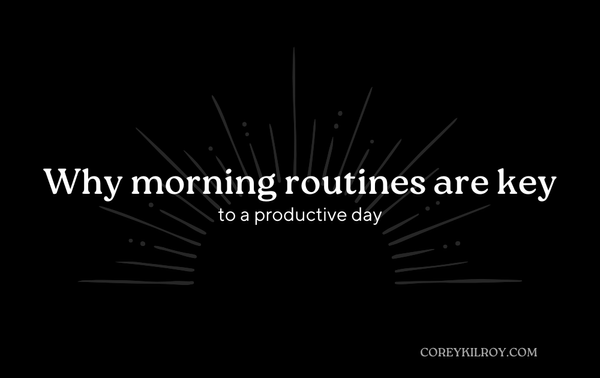LISS Cardio
Pros & Cons vs HIIT Cardio

When I first started my fitness journey, LISS cardio was my preferred form of weekly cardio.
I’d strength train 4-5 days a week and then squeeze in a LISS cardio and core day in the middle of the week to keep my heart healthy, etc.
Now that I’ve adopted running into my training, I use LISS less frequently but it is still an excellent form of cardio.
Plus, just about anyone can start doing it.
Grab your sneakers and let’s dive in…
What is LISS Cardio?
By definition, low-intensity steady-state (LISS) cardio is “a method of cardiovascular exercise in which you do aerobic activity at a low-to-moderate intensity for a continuous, and often extended, period.”
In short, it’s the opposite of high-intensity interval training (HIIT), which involves alternating short bursts of intense exercise with low-intensity recovery periods.
The American Council on Exercise notes that while steady-state training is an effective way to burn calories and train your aerobic system, it also requires more time to get results… duh.
Nonetheless, LISS cardio will also be called several other names, including:
- low-intensity exercise
- steady-state training (SST)
- continuous cardiovascular exercise
- long slow distance (LSD) training
What Makes a Workout “LISS”?
LISS is most often associated with brisk walking, easy running, cycling, swimming, and other cardio activities that require longer sessions of low-intensity exercise.
One big difference between LISS and other types of cardio is the intensity of the workouts.
Heart rate targets (HRT) can be an effective tool to help you measure and understand the intensity of a workout.
Obviously, the higher your heart rate, the harder your body is working (or the higher the intensity of the activity you’re doing).
The upper limit of exercise intensity, that is considered safe, is known as the maximum target heart rate. You can roughly calculate this upper limit by taking 220 beats per minute (bpm) minus your age (in years).
For example, your max heart rate is about 200 bpm at age 20, or about 185 bpm at age 35.
However, with LISS or moderate-intensity exercise, your goal should be to reach about 50 to 70 percent of your maximum target heart rate.
Keep in mind that fitness level affects what types of activity you can or can’t do without raising your heart rate above a certain threshold.
For people with lower fitness levels, slow jogging might raise heart rate well above the threshold for LISS exercise.
In contrast, for fitter people, jogging might raise the heart rate to the LISS exercise target.
Nonetheless…
What are the benefits of LISS?
Like other forms of exercise, LISS cardio has many benefits.
Some benefits include:
- An effective way to train for endurance events. I’m currently training for a half marathon and I’ve quickly learned the importance of Zone 2/Easy runs. This is because these easy runs help to build an aerobic base level of fitness. This can be an effective way to prepare for an endurance event like the half marathon.
- Aids in fat burning and fat loss. LISS training can improve your body’s ability to use fat as fuel instead of using the glycogen stored in your muscles. Also, according to a 2014 study, LISS is said to be more effective than HIIT at improving fat distribution.
- It’s appropriate for all levels. Since LISS is easier to do and easier on the body, it’s perfect for beginners. Intermediate to advanced fitness levels often use it as part of an endurance training program as well – *raises hand*.
- Allows for easier recovery. Because you’re putting less stress on your heart and body, you may find you recover more quickly and easily from LISS.
- Also great for recovery after a difficult workout. You can still train your cardiovascular system by using LISS as a recovery session the day after a high-intensity workout.
LISS vs. HIIT: What’s the difference?
Many will say that HIIT is a better form of training than steady-state cardio (especially in terms of fat loss), but while both styles have advantages and disadvantages, one doesn’t seem to be better overall than the other.
In fact, one study found that there’s no real advantage to doing very HIIT as compared with LISS cardio.
Please read that sentence again if you have to.
Here are some more specifics as to what the difference is between LISS and HIIT training:
- Compared with a HIIT workout that takes 30 minutes, a LISS workout delivers the same benefits (in terms of energy expenditure or calories burned) but will take much longer.
- Pacing LISS is done at the same pace the entire time, while HIIT intersperses periods of intense exercise with brief recovery periods.
- Attention and focus required during LISS workouts: you’re usually doing the same activity for a long period of time, which for most won’t require too much concentration. During HIIT workouts, however, you may have to pay more attention and concentrate harder on switching up movements and effort.
Despite what many “gurus” say, you do not need to kill yourself with a HIIT workout every day to lose weight.
Cons of LISS training?
Despite the many benefits of LISS training, there are some downsides as well.
- It requires longer cardio sessions, typically at least 45 to 60 minutes long.
- You may get bored doing the same exercise at the same intensity for a long time. I used to always have my best friend join me or toss on a podcast during my LISS workouts. This helps to bass the time and make the training less boring.
- You may increase your risk of overuse injuries if you do the same type of workout too often.
Is LISS cardio right for you?
LISS cardio is a good addition to most people’s routines because it’s generally safe and appropriate for all fitness levels.
If you can easily fit a 45- to 60-minute cardio workout into your schedule, and you prefer a steady pace of intensity, then LISS may be a great choice for you.
Plus, if you’re training for an endurance event like a 10K, half marathon, triathlon, or cycling race, then you’ll most likely use steady-state cardio several times a week.
How to get started with LISS
There are a plethora of ways to get started with LISS training.
1. If you belong to a gym or have home cardio equipment like a treadmill, elliptical, rower, or exercise bike, you can get started by using one or more of these machines at a steady pace for 45 to 60+ minutes. My favorite form of LISS training is going on the treadmill at a 12% incline, at 3 mph, for 30 minutes (aka 12-3-30 workout).
2. If you prefer exercising outdoors, you can head outside for a long easy run or bike ride. You could even head to the trail for a nice hike or shoot some hoops for a bit. Purely walking at a moderate pace is another excellent form of LISS training.
3. If you think you’ll get bored doing the same type of workout, you can mix things up by doing a HIIT routine 1 or 2 days a week. Remember, since HIIT is high-intensity, you need to work out for a shorter duration compared to LISS training. Typically about 20-30 minutes.
In the end…
LISS cardio is a great way to improve your cardiovascular health and aid your training.
It’s generally safe to do and requires minimal necessities other than time.
Give it a try the next time you have cardio to do.
Be well and Keep Pluggin.
-C.



